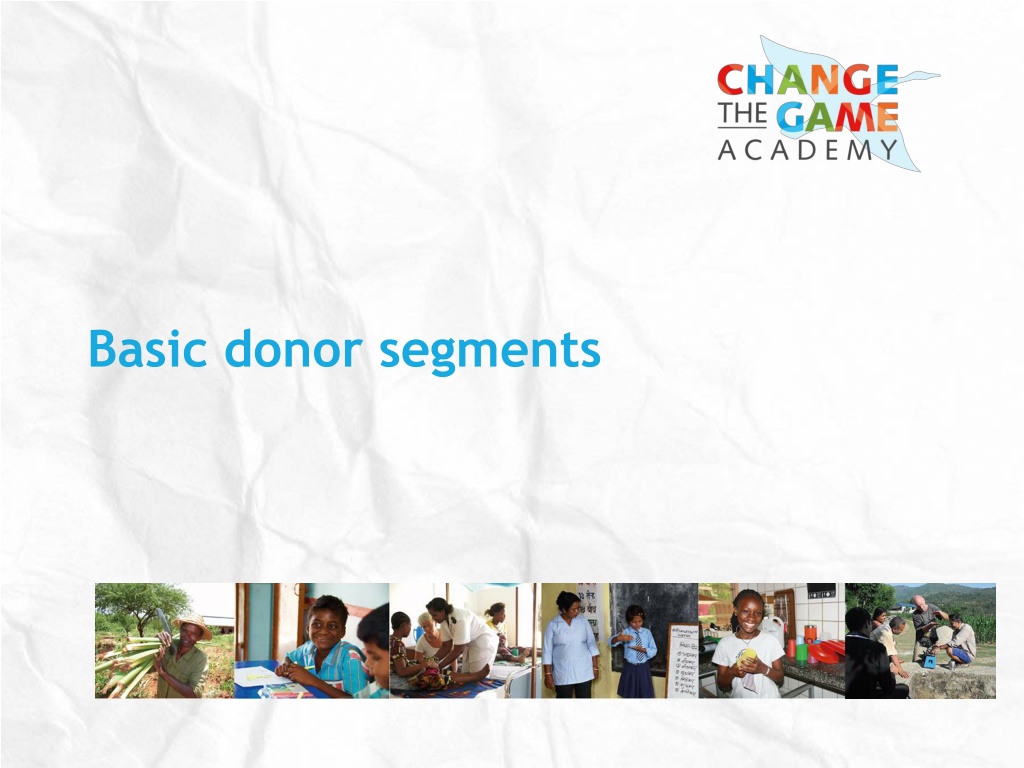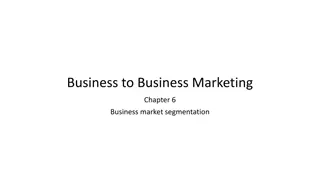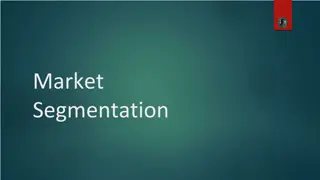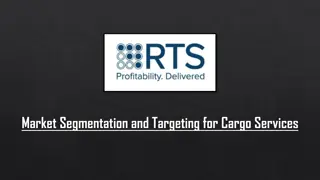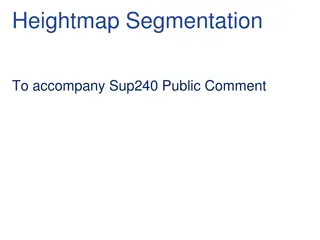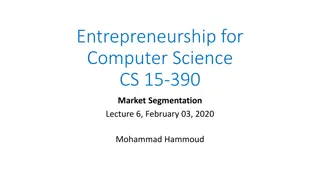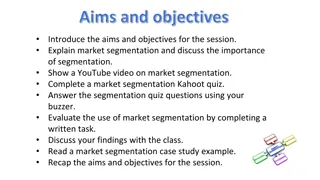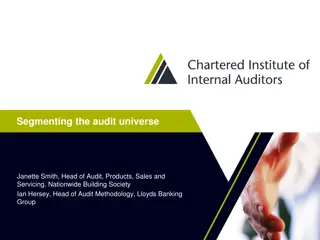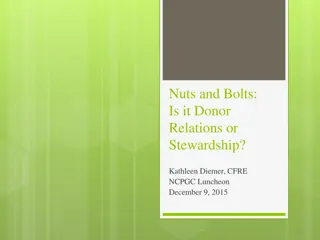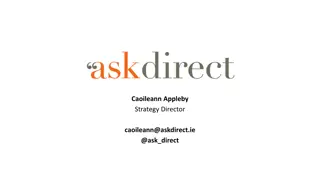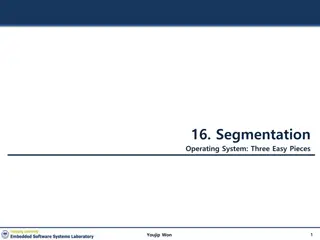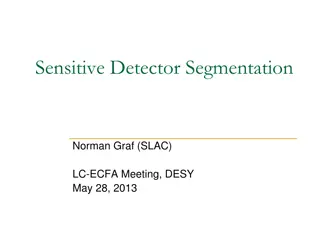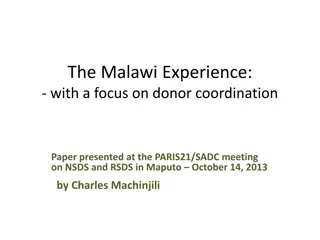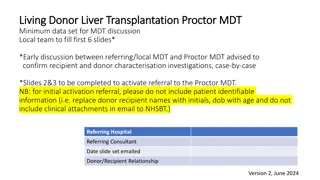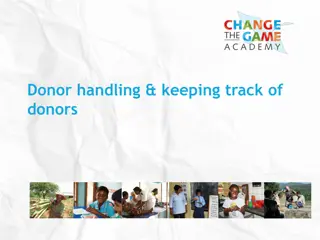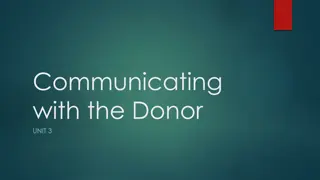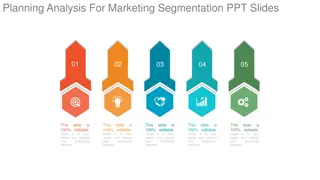Understanding Donor Segmentation for Effective Engagement
Explore different donor segments such as donors, non-donors, lapsed donors, and potential supporters connected to your organization. Learn how to develop strategies to engage non-donors, convert them into donors, and encourage existing donors to bring in new supporters. Utilize this segmentation to enhance your fundraising efforts and cultivate stronger relationships with your community.
Download Presentation

Please find below an Image/Link to download the presentation.
The content on the website is provided AS IS for your information and personal use only. It may not be sold, licensed, or shared on other websites without obtaining consent from the author. Download presentation by click this link. If you encounter any issues during the download, it is possible that the publisher has removed the file from their server.
E N D
Presentation Transcript
Donors and non-donors Look closely at the people that are related to your organisation but do not (yet) give. For instance, volunteers, advocates of the cause, eminent persons that are connected to your organisation, and staff.
Donors and non-donors Look closely at the people that are related to your organisation but do not (yet) give. For instance, volunteers, advocates of the cause, eminent persons that are connected to your organisation, and staff. This segmentation can help you in:
Donors and non-donors Look closely at the people that are related to your organisation but do not (yet) give. For instance, volunteers, advocates of the cause, eminent persons that are connected to your organisation, and staff. This segmentation can help you in: Developing strategies to further engage the non-donors and convert them into donors.
Donors and non-donors Look closely at the people that are related to your organisation but do not (yet) give. For instance, volunteers, advocates of the cause, eminent persons that are connected to your organisation, and staff. This segmentation can help you in: Developing strategies to further engage the non-donors and convert them into donors. Encouraging donors to help find new donors.
Donors and non-donors Look closely at the people that are related to your organisation but do not (yet) give. For instance, volunteers, advocates of the cause, eminent persons that are connected to your organisation, and staff. This segmentation can help you in: Developing strategies to further engage the non-donors and convert them into donors. Encouraging donors to help find new donors.
Lapsed donors Donors who stopped giving are an important group to pay special attention to.
Lapsed donors Donors who stopped giving are an important group to pay special attention to. This segmentation can help you in:
Lapsed donors Donors who stopped giving are an important group to pay special attention to. This segmentation can help you in: Creating a special fundraising activity to regain these donors.
Lapsed donors Donors who stopped giving are an important group to pay special attention to. This segmentation can help you in: Creating a special fundraising activity to regain these donors. Involving management and the board to regain major donors that stopped giving.
Lapsed donors Donors who stopped giving are an important group to pay special attention to. This segmentation can help you in: Creating a special fundraising activity to regain these donors. Involving management and the board to regain major donors that stopped giving.
Small-gift donors and major donors Most organisations have a few donors that give a substantial amount and many donors that give a smaller amount. Both are important for the organisation, but need a different approach to engage with. An organisation should give special attention to their major donors, very often they contribute a significant share of the total income.
Small-gift donors and major donors This segmentation can help you in:
Small-gift donors and major donors This segmentation can help you in: Developing targeted donor engagement plans for each segment. One might, for example, want to plan personal meetings with major donors, while for smaller donors may be served with regular updates through a news mail (personal meetings would be too time consuming).
Small-gift donors and major donors This segmentation can help you in: Developing targeted donor engagement plans for each segment. One might, for example, want to plan personal meetings with major donors, while for smaller donors may be served with regular updates through a news mail (personal meetings would be too time consuming). Determining the right amount to ask and the message and presentation of your ask (one should not over ask but also not ask too little).
Small-gift donors and major donors This segmentation can help you in: Developing targeted donor engagement plans for each segment. One might, for example, want to plan personal meetings with major donors, while for smaller donors may be served with regular updates through a news mail (personal meetings would be too time consuming). Determining the right amount to ask and the message and presentation of your ask (one should not over ask but also not ask too little).
Recurring donors and one-off donors Every organisation should aim for recurring donations.
Recurring donors and one-off donors Every organisation should aim for recurring donations. This segmentation can help you in:
Recurring donors and one-off donors Every organisation should aim for recurring donations. This segmentation can help you in: Developing strategies to convert one-off donors into recurring donors by addressing them with the right ask.
Recurring donors and one-off donors Every organisation should aim for recurring donations. This segmentation can help you in: Developing strategies to convert one-off donors into recurring donors by addressing them with the right ask. Appreciating the loyalty of recurring donors through targeted communication to this segment.
Recurring donors and one-off donors Every organisation should aim for recurring donations. This segmentation can help you in: Developing strategies to convert one-off donors into recurring donors by addressing them with the right ask. Appreciating the loyalty of recurring donors through targeted communication to this segment.
